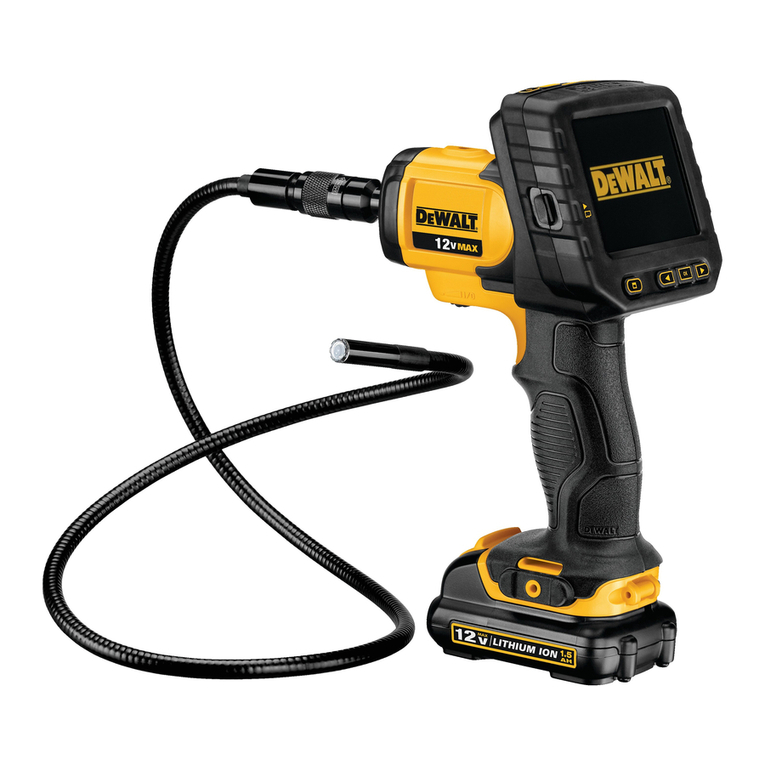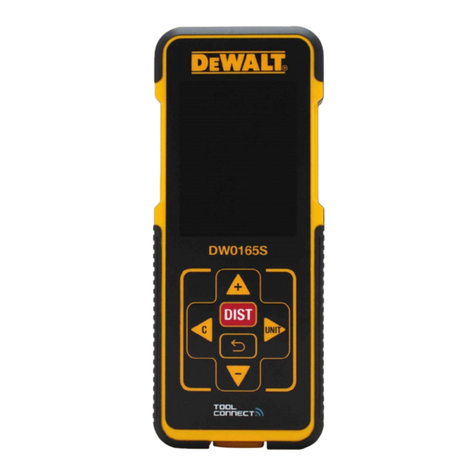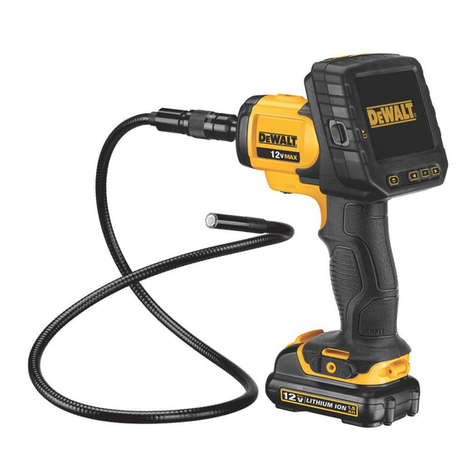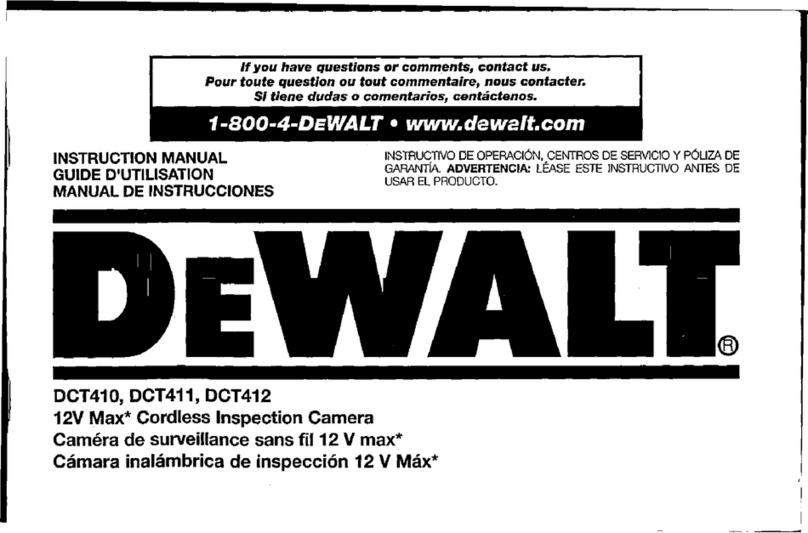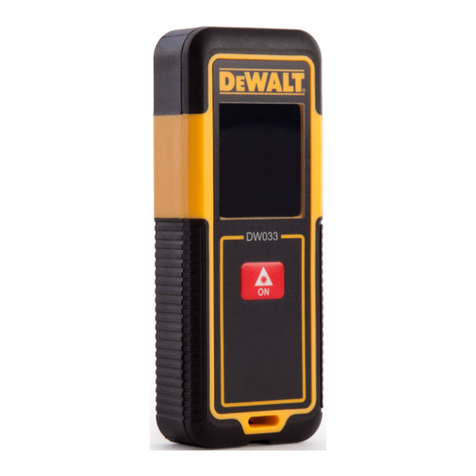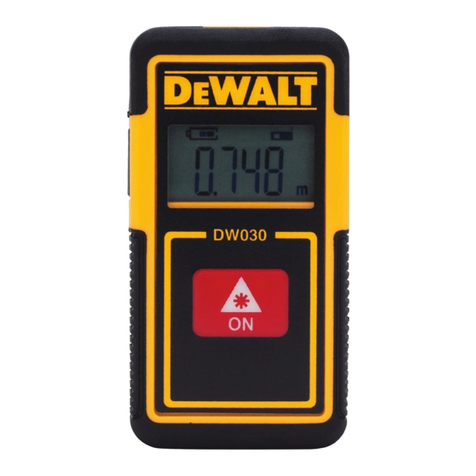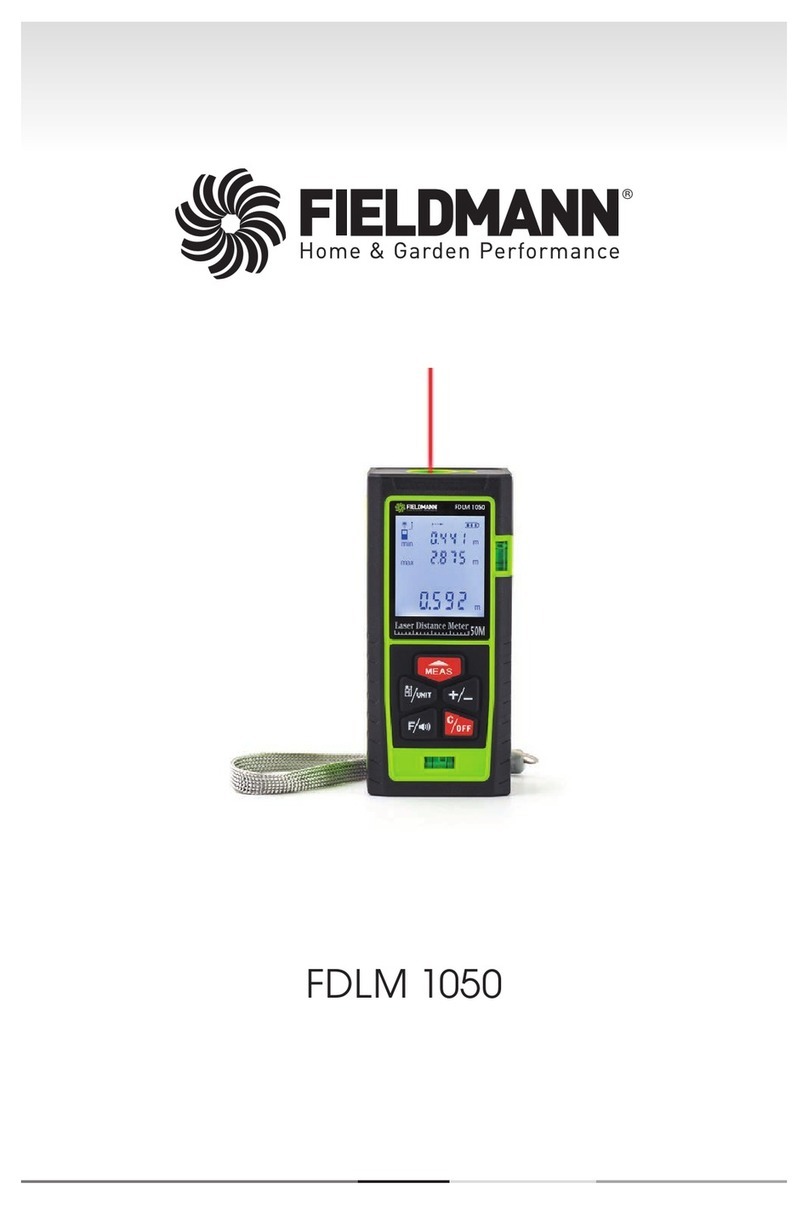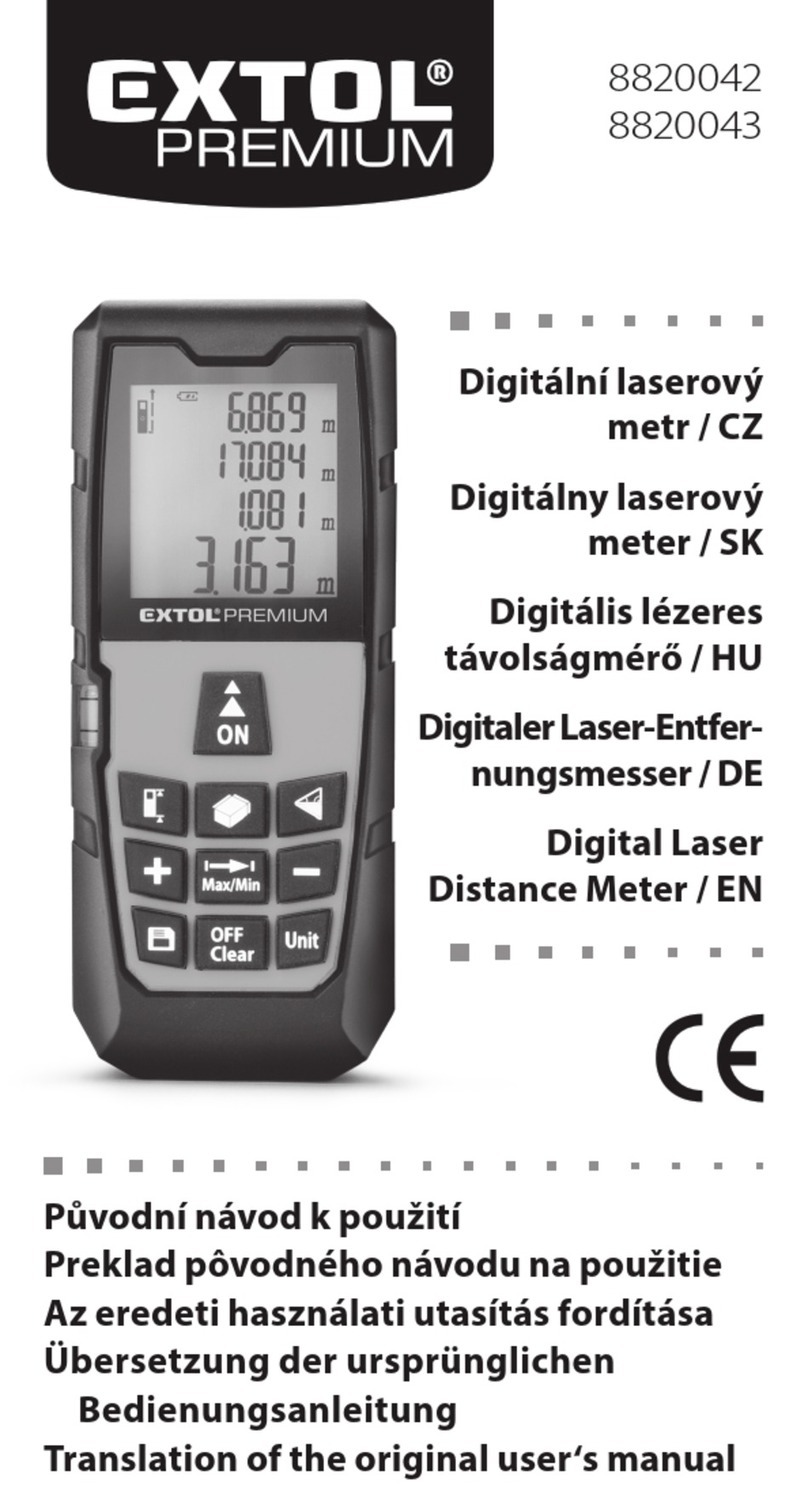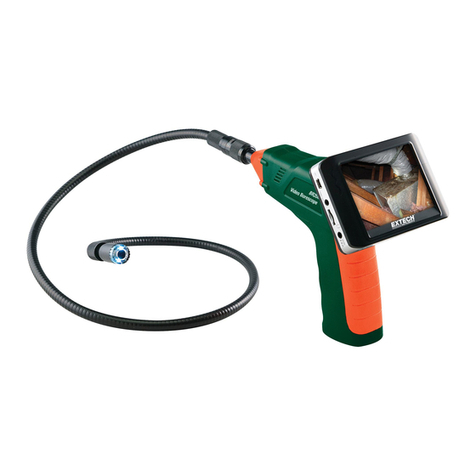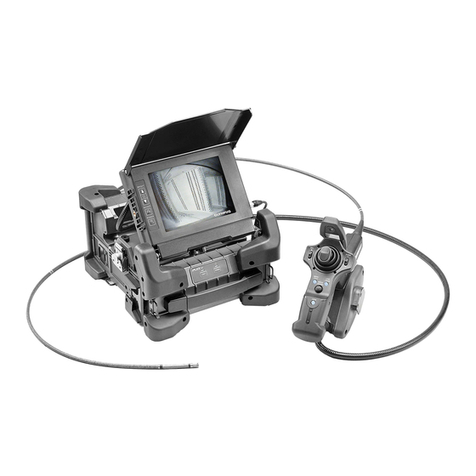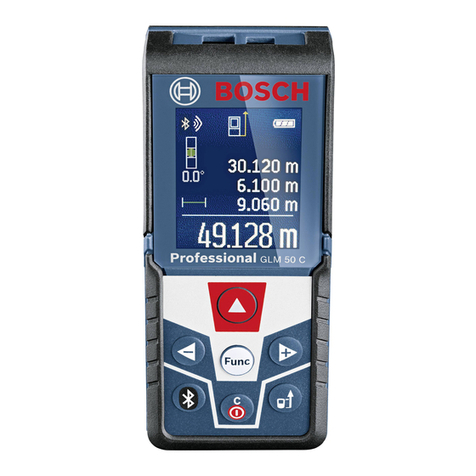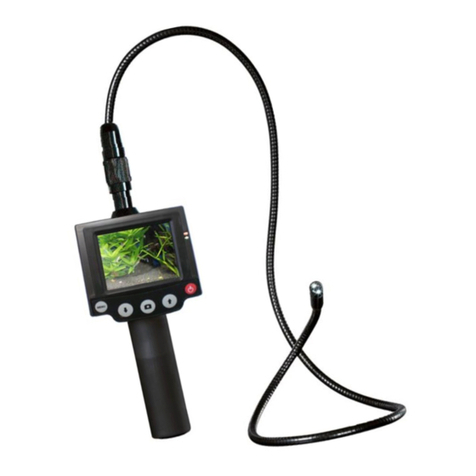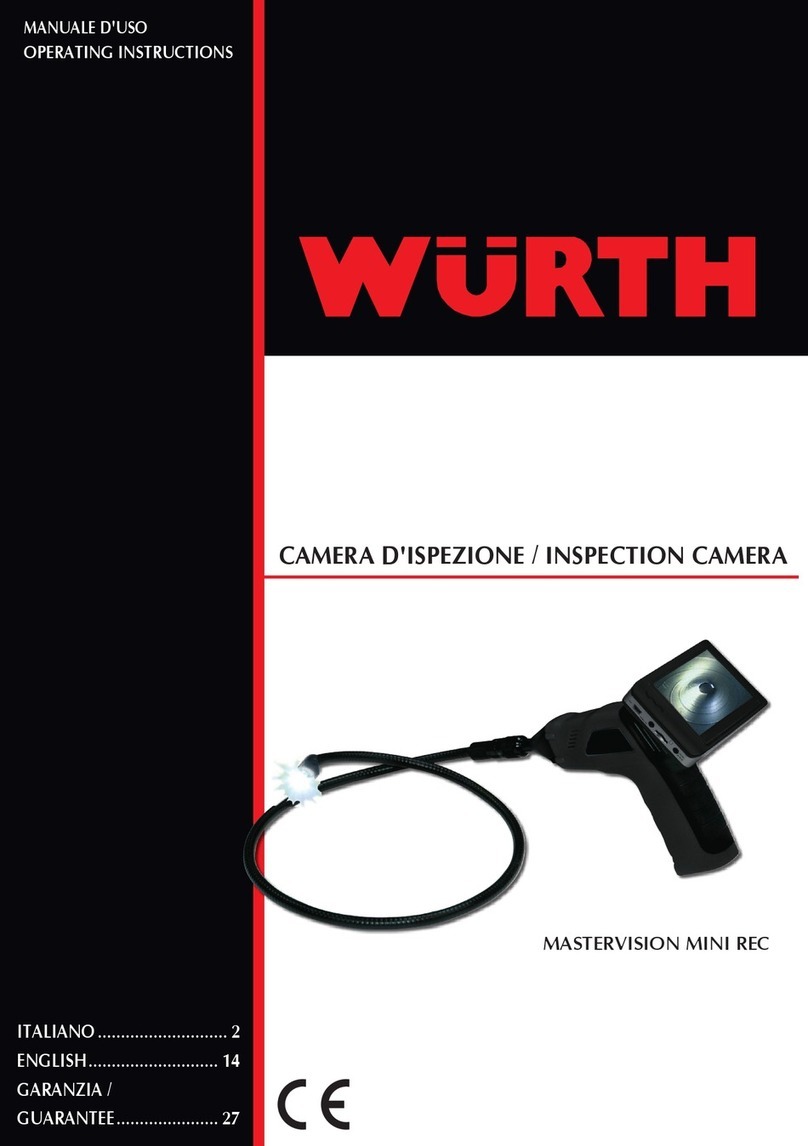
6
EMeasuring Area
You can measure the area of a wall, floor, or object.
1. Point the tool's laser (Figure A1) toward a wall or
object, and not toward anyone's eyes.
2. Click (Figure A3) to turn the tool on.
3. By default, distances are measured from the bottom
of the tool to a wall or object (Figure E3).
To measure distances from the top or middle of the
tool, or from the tool's endpiece (when it is flipped
open to measure from a corner), click .
4. Click .
5. Click .
6. Click to determine the area of one wall, floor, or
object, or click to add or subtract the areas of
two walls, floors, or objects.
7. Measure the width.
• Point the top of the tool at one side of the target
(wall, floor, or object).
• Position the tool at one end of the target and
point the laser dot across the width. (Figure F
1shows where to position the tool if you are
measuring from the bottom of the tool.)
• Click to display the width measurement at
the top of the display window.
8. Measure the length.
• Position the tool at one end of the target and
point the laser dot across the length. (Figure F
2shows where to position the tool if you are
measuring from the bottom of the tool.)
• Click to display the length measurement on
the second line of the display window.
9. View the Area measurement at the bottom of the
display window (Figure C6).
Measuring Volume
You can measure the volume of a room or object.
1. Point the tool's laser (Figure A1) toward a wall or
object, and not toward anyone's eyes.
2. Click (Figure A3) to turn the tool on.
3. By default, distances are measured from the bottom
of the tool to a wall or object (Figure E3).
To measure distances from the top or middle of the
tool, or from the tool's endpiece (when it is flipped
open to measure from a corner), click .
4. Click .
5. Click .
6. Click to determine the volume of one room or
object, or click to add or subtract the volumes
of two rooms or objects.
7. Measure the width.
• Point the top of the tool at one side of the target
(room or object).
• Position the tool at one end of the target and
point the laser dot across the width. (Figure G
1shows where to position the tool if you are
measuring from the bottom of the tool.)
• Click to display the width measurement at
the top of the display window.
8. Measure the length.
• Position the tool at one end of the target and
point the laser dot across the length. (Figure G
2shows where to position the tool if you are
measuring from the bottom of the tool.)
• Click to display the length measurement on
the second line of the display window.
9Measure the height.
• Positon the tool at one end of the target and
point the laser dot across the height. (Figure G
3shows where to position the tool if you are
measuring from the bottom of the tool).
• Click to display the height measurement on
the third line of the display window.
10. View the Volume measurement at the bottom of the
display window (Figure C6).
Measuring the Height of a Tall Object
If you need to measure the height of a tall object (e.g.,
a tall building), you can calculate the height based on
the distances from the same point to 2 or 3 points on
the object. The tool will use the Pythagorean Theorem
(C2=A2+B2) to calculate the height.

